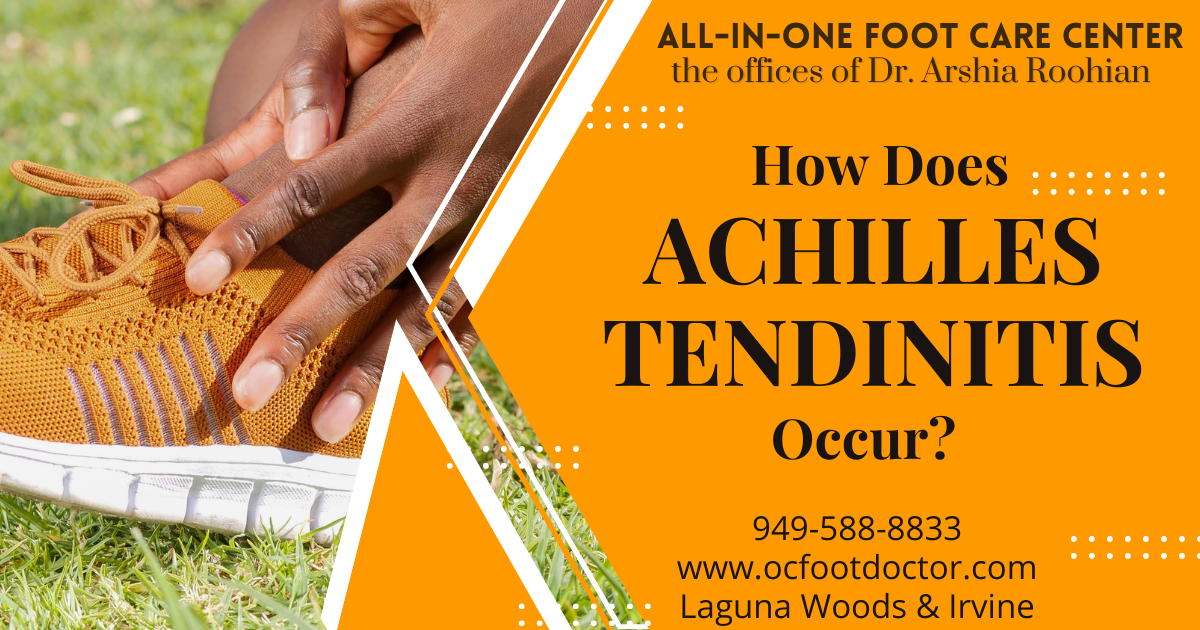How Does Achilles Tendinitis Occur?

This condition causes pain along the back of the leg near the heel. The Achilles tendon connects your calf muscles to your heel bone. It is the longest tendon in the body. Every time you walk, run, or jump, the Achilles tendon is put under stress. As a result of overuse and degeneration, it is prone to tendinitis.
Inflammation of tendons is termed tendinitis. Injury or disease causes inflammation in the body. Achilles tendinitis has two types, depending on which part of the tendon is inflamed.
In non insertional tendonitis, fibers in the middle of the tendon break down, swell, and thicken. Young athletes are more likely to suffer from this condition.
The insertional part of the injury is in the heel's lower portion, where the tendon attaches to the heel bone.
Where does Achilles tendonitis come from?
There is no specific cause for Achilles tendonitis, and patients who are inactive can develop it at any time. The condition is often caused by repeated stress on the affected tendon. An increase in the amount or intensity of exercise, tight calf muscles, or bone spurs can cause someone to develop tendinitis.
Achilles tendinitis symptoms include what?
- Morning stiffness and pain along the Achilles tendon
- Pain along the tendon or the back of the heel that worsens with activity
- After exercise, severe pain occurs
- Tenderness of the tendon
- A bone spur
- There is constant swelling that gets worse with activity.
What is the diagnosis of Achilles tendonitis?
A doctor will ask you for a detailed medical history, have you describe your symptoms and conduct a physical exam. It might be necessary to get an X-ray or MRI to exclude other problems.
What are the treatment options for Achilles tendonitis?
Most cases can be treated without surgery. Pain may take up to six months to completely subside, even with early treatment.
Treatment options that do not require surgery:
- Take a rest
- Ice
- Medicines that reduce inflammation
- A physical therapy session
- The immobilization of the body
- Exercises to stretch the calf muscles
A physician may recommend surgery if nonsurgical treatment fails to relieve your pain after six months. Depending on your individual situation, your orthopedic doctor may recommend one of several types of surgery.
There are several surgical options
The type of surgery depends on the location of the tendinitis. Noninsertional tendinitis tends to respond best to nonsurgical treatment. Surgical treatment may include debridement and repair of the affected tendon, sometimes accompanied by a tendon transfer if the pain does not resolve.
The surgical treatment of insertional Achilles tendinitis involves debridement of the affected tendon and its insertion, as well as the reattachment of the tendon.
What is the best way to recover from Achilles tendonitis?
After surgery, it is important to keep weight off your tendon for several weeks so that it can fully recover. Full recovery usually takes from six months to a year after surgery.
Make an appointment
We are concerned about your well-being. For an appointment with one of our orthopedic specialists, you can contact our office at 949-588-8833, or visit our website at https://www.ocfootdoctor.com. All-in-One Foot Care Center offices are located in Laguna Hills, Irvine, Mission Viejo, Aliso Viejo, Lake Forest, Foothill Ranch, and Costa Mesa.
📲 949-588-8833
🏢 24331 El Toro Rd, Suite 370 Laguna Woods CA 92637
🌐 https://www.ocfootdoctor.com/


